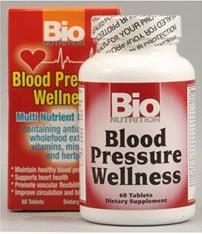Save 25% On Your First Autoship Order
Save 25% On Your First Autoship Order

The well-known common mantra is that high blood pressure is generally “bad.” Yes, high blood pressure can be associated with a number of serious negative health issues and they include (but are not limited to) cardiovascular problems, diabetes, and other metabolic issues. High blood pressure or hypertension has always been a red flag in the medical profession, but new studies are questioning whether or not high blood pressure or hypertension is always a cause for concern.

We have all heard the term hypertension, but do we actually understand what hypertension (high blood pressure) is? If it sounds confusing, it’s because it is. The answer to that question is a little bit confusing since even specialists argue over what is “normal blood pressure.” When you take your blood pressure you will hear two numbers and these are systolic and diastolic pressure. These refer to your blood pressure when you’re heart is beating and resting, respectively. The diastolic pressure is your lower number and the systolic pressure reading is the higher number. Unfortunately, different organizations have different definitions for what is considered normal.
For instance, the National Heart, Lung, and Blood Institute considers hypertension to be a consistent systolic reading of 140 mmHg (millimeters of mercury) or higher while the American Heart Association considers the hypertension threshold to be 130 mmHg. To confuse things further, the CDC sitters those with a systolic blood pressure of 120-139 mmHg and those that are “at risk” of hypertension. Apparently this is not a universally held number. Patients usually get a recommendation from their physician to check their blood pressure at home in order to keep it in check. Sound advice!!
Regardless of which threshold you want to believe in, monitoring your blood pressure and keeping your doctor informed is the best way to avoid being blindsided by hypertension. To good, it keep a blood pressure monitor in the home keep an eye on your stolid/diastolic pressures. The threshold for hypertension (regardless of organization) is where healthcare professionals believe people are at risk for heart disease or even strokes. Your doctor may even suggest you take aspirin to minimize the risk of cardiac event or stroke. You should not be in any aspirin or supplement regimen without consulting your physician first. One study in Germany suggests that older folks may not face some of the other health problems associated with high blood pressure. In fact, in those involved in the studies that were 80 years old or more, those with a lower blood pressure actually had a higher mortality rate. This study author, Dr. Antonios Douros, wrote “antihypertensive treatment should be adjusted based on the needs of the individual.” Basically, there is no one-size-fits-all treatment for high blood pressure. Of course, this is not a directive to ignore your doctor’s orders or discontinue any prescribed medications.

TBio Nutrition Blood Pressure Wellness
High blood pressure or hypertension can be a signal for more serious health issues down the road. However, as with other medical treatments, it may not be a case of a blanket therapy that covers everyone. What works for one may not work for you!! Heed your physician’s instructions and guidelines, but don’t be afraid to ask questions.
Disclaimer: All content found on our website, including images, videos, infographics and text were created solely for informational purposes. Our content should never be used for the purpose of diagnosis or treatment of any medical conditions. Content shared on our websites is not meant to be used as a substitute for advice from a certified medical professional. Reliance on the information provided on our website as a basis for patient treatment is solely at your own risk. We urge all our customers to always consult a physician or a certified medical professional before trying or using a new medical product.

Kevin Cleary has been a Health Products For You contributor for many years and has a degree in marketing. His health and wellness journey has a very personal meaning and has guided him in his content writing for HPFY.
In 2006, ...
How To Increase Iron Levels Quickly
It’s a question that must have puzzled you like many others. Iron is essential in hemoglobin production and its inadequate levels can negatively impact your health. Dive into this informative article to explore top iron-rich foods that can help you fight iron deficiency.
10 Best Coccyx Cushions for Tailbone Pain
If you're like most people, you spend about 8 to 10 hours sitting every day. However unhealthy, it is part of life for many, and can cause tailbone pain. Coccyx cushions can help alleviate this pain. Click to read more and find the perfect coccyx cushion for your tailbone pain.
5+ Best Adult Diapers for Fecal Incontinence
Dealing with fecal incontinence can be challenging, but you're not alone. Read this article and navigate through discreet and effective solutions that help you manage fecal incontinence and let you live life on your terms with confidence and comfort.
Top 5 Best Reviewed Nebulizers of 2024
Need an effective and affordable nebulizer? Look no further, in this article we offer 5 of our best reviewed nebulizers that are loved by our customers. Click to read more and find the perfect nebulizer for all your respiratory needs.
10 Best Penis Pumps For Erectile Dysfunction
For anyone dealing with erectile dysfunction, penis pumps serve as a great way to manage it. But with so many products available, determining the best one for your needs can be challenging. To assist you in refining your choices and making an informed decision, here are our top 10 options, recognized for their effectiveness and safety.